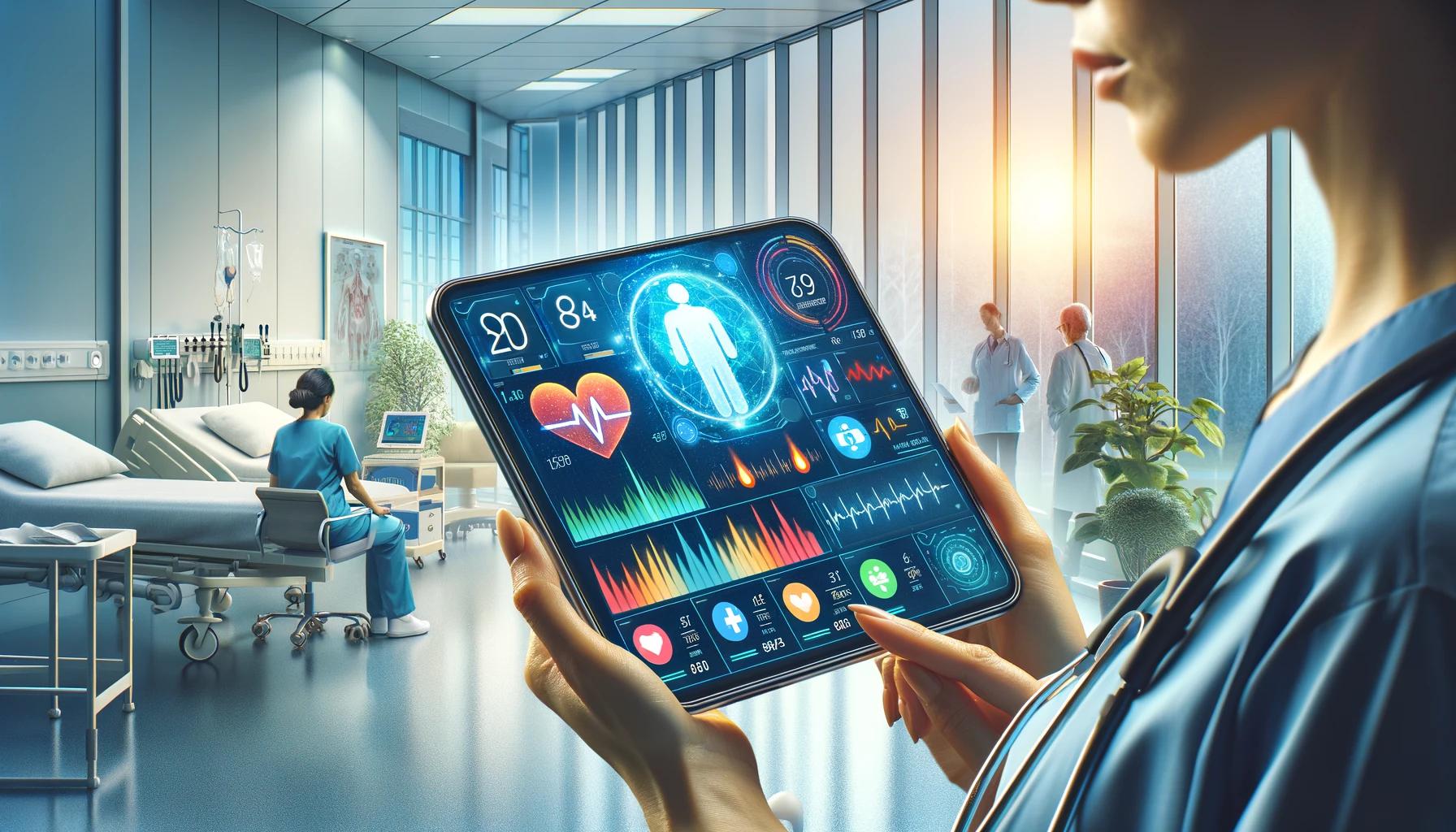In the rapidly evolving world of healthcare, technology stands at the forefront of innovation, offering new ways to enhance patient care.
Among these advancements, Remote Patient Monitoring (RPM) using AI-powered devices is transforming how nurses interact with and care for patients.
This article explores the essence, benefits, and applications of RPM technology, and why it’s an invaluable tool for nurses today.
Understanding Remote Patient Monitoring Technology
At its core, remote patient monitoring technology is a method for healthcare professionals to monitor patients’ health outside traditional clinical settings.
This approach utilizes AI-powered devices to collect health data such as heart rate, blood pressure, glucose levels, and more. For nurses, this means being able to keep an eye on patients’ well-being in real-time, without the need for constant physical presence.
The Benefits of Using AI-Powered Devices for Patient Monitoring
The integration of AI into RPM devices brings a multitude of benefits. It enables precise monitoring, predictive analysis, and timely intervention, which are crucial in managing chronic diseases and preventing hospital readmissions.
Nurses can leverage these devices to make informed decisions quickly, improving patient outcomes significantly.
How Do AI-Powered Remote Patient Monitoring Devices Work?
AI-powered RPM devices work by collecting health data from the patient and using algorithms to analyze this information.
These devices can detect abnormalities and alert nurses and doctors, facilitating immediate action. This technology simplifies the process of monitoring patients remotely, making it easier for nurses to manage their care effectively.
Remote Patient Monitoring Solutions for Various Conditions
RPM technology finds its application across a wide range of health conditions. For patients with heart disease, AI-driven devices can monitor heart rhythms and detect early signs of heart failure.
In the case of diabetes, these devices track glucose levels, helping nurses provide timely advice on insulin management. Furthermore, RPM is invaluable in elderly patient care, offering a way to monitor their health continuously, ensuring safety and well-being.
Implementing Remote Patient Monitoring in Healthcare Facilities
Implementing RPM in healthcare settings requires careful planning and training. Nurses play a crucial role in this process, as they are often the primary users of these technologies.
By understanding the setup and operation of RPM systems, nurses can ensure a seamless integration into patient care routines, enhancing the efficiency and effectiveness of healthcare delivery.
Challenges and Solutions in Remote Health Monitoring with AI
While RPM offers numerous advantages, it also presents challenges, including privacy concerns and the need for patient education. Addressing these challenges involves ensuring robust security measures are in place and providing clear instructions to patients on using the devices.
Nurses, with their direct line of communication with patients, are perfectly positioned to tackle these issues head-on.
Privacy and Security in AI-Powered Remote Patient Care
Privacy and security are paramount in RPM. Nurses must ensure that patient data is handled with the utmost care, adhering to health information privacy regulations.
By fostering an environment of trust and security, nurses can reassure patients about the safety of remote monitoring.
Future Trends in Remote Patient Monitoring Technology
The future of RPM looks promising, with ongoing innovations aimed at enhancing patient care.
From more sophisticated AI algorithms to wearable technology, these advancements will offer nurses new tools to monitor and support patients’ health more effectively.
Guide to Choosing the Best AI-Powered Monitoring Devices
For nurses, selecting the right RPM devices is crucial. It involves considering factors such as the specific health conditions being monitored, ease of use, and data accuracy.
By choosing the best devices, nurses can ensure that patients receive the highest quality of remote care.
How to Use Remote Patient Monitoring Devices Effectively
Effective use of RPM devices by nurses involves regular monitoring, data analysis, and communication with patients.
Nurses must be proficient in interpreting the data these devices provide and act swiftly on any alerts or signs of deterioration in a patient’s health.
Tips for Patients Using AI Devices for Health Monitoring
Nurses also play a key role in educating patients on using RPM devices. This includes instructions on wearing devices correctly, understanding the data displayed, and knowing when to contact healthcare providers.
Patient engagement and education are crucial for the success of RPM in managing health.
Conclusion
Remote Patient Monitoring using AI-powered devices represents a significant leap forward in healthcare.
For nurses, it offers an unprecedented opportunity to enhance patient care, allowing for real-time monitoring, early intervention, and personalized care plans.
By embracing RPM technology, nurses can play a pivotal role in shaping the future of healthcare, ensuring that patients receive the best possible care, anytime and anywhere.

